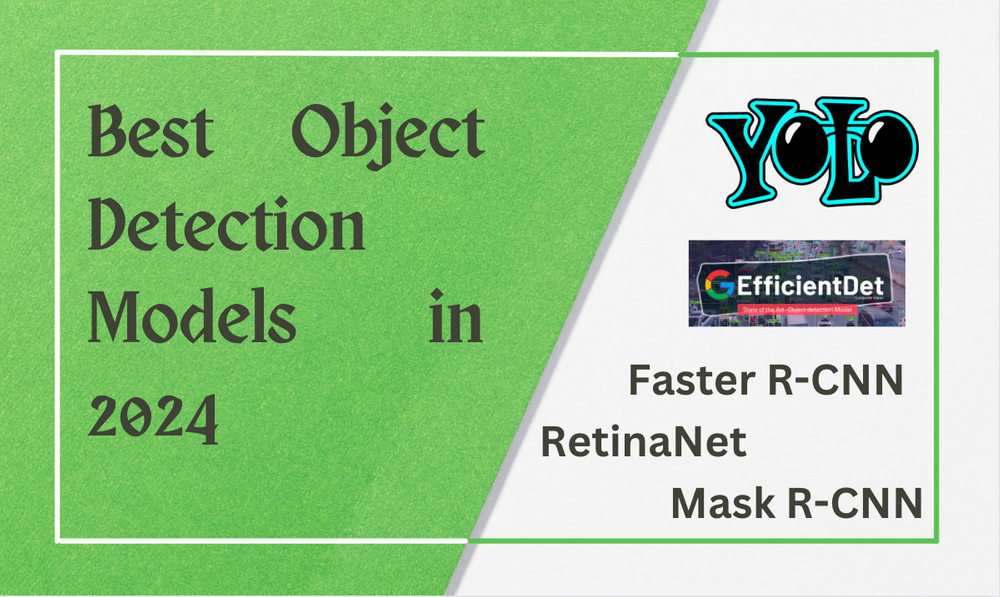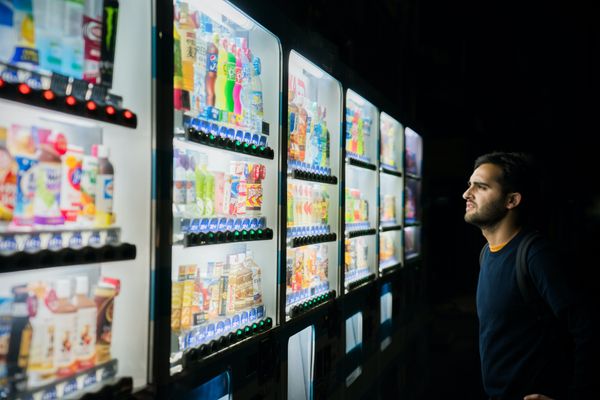Best Object Detection Models in 2024
Object detection is an essential area of computer vision and artificial intelligence, which lets computer programs "see" their environment by recognizing things in pictures or videos. The advancements in deep learning have resulted in exceptional precision rates for object detection. As a result, there are numerous cutting-edge models for object detection available.
We took a look at best object detection models available in 2024, and compared them for you.
Whether you're a computer vision or machine learning application developer or an enthusiast in this field, this article will help you decide which one to use for your next project.
What Are Object Detection Models?
Object detection models are used to analyze videos or pictures to identify and locate objects with the aim of performing further computational tasks. Sercan Çayır et al. published a book titled "Intelligent Data-Centric Systems," and the authors categorize cutting-edge object detection algorithms into three main types:
1) Conventional image processing techniques, such as Edge Detection for identifying boundaries, separating objects from the background, and Histogram of Oriented Gradients (HOG) showing shapes and their appearance using gradient orientations.
2) Deep learning algorithms with two stages, including examples such as various R-CNN models faster object separation from the background with faster speeds and higher accuracy.
3) Deep learning algorithms with one stage, such as YOLO models, RetinaNet, and SSDs. Compared to the other types, these are much faster approaches but often need more accuracy.
Object detection models employ a combination of convolutional layers for feature extraction and other specialized layers, such as region proposal networks (RPN) or anchor-based mechanisms to generate bounding boxes around objects of interest. Additionally, these models often incorporate state-of-the-art techniques like non-maximum suppression (NMS) to filter out redundant detections and improve overall detection accuracy.
These models can accurately and efficiently identify objects in real-time, making them indispensable tools in fields like autonomous driving, video surveillance, and object recognition applications.
Why is Object Detection So Important?
Object detection models are used across many fields, including,
- Self-driving cars detect road signs, other vehicles, and pedestrians.
- Security systems with CCTV cameras to perform access control.
- Supermarkets to track customer behavior and analyze product placement.
- Mixed reality games such as Pokemon Go are used to identify and place virtual content in the real world.

Figure: Using real-time palm detection in an augmented reality application to interact with virtual content
As you can see from the above examples, object detection is a fundamental part of those applications to automate tasks, improve safety, and increase overall efficiency in interpreting visual data. Its extensive range of applications makes it crucial for developing intelligent systems across various domains. Therefore, object detection accuracy and speed are significant factors when deciding on a model for a computer vision application.
There are various open-source and commercial models out there for you to pick, and below are some of the best object detection models to consider.
The Best Object Detection Models for 2024
1. YOLO (You Only Look Once)

YOLO object detection model (source)
YOLO (You Only Look Once) is a group of object detection models that are highly popular among computer vision and machine learning application developers. YOLO introduced a ground-breaking technique for object detection following a single-stage approach. In YOLO models, first, the image is separated into equal dimensional cells. Next, the model processes each cell to determine the object label and probability of the item present in the cell.
YOLOv6 (2022) and YOLOv7 (2023) are the state-of-the-art models of the YOLO lineup. Previous versions like YOLOv6 prioritize efficiency, but YOLOv7 and YOLOv8 focus on mode processing speeds. They're expanding the boundaries of what YOLO can deliver and ideal candidates to consider for your next computer vision application in 2024.
And, implementing object detection with YOLO isn't difficult! In fact, it only takes a bit of code to do so.
To implement and run YOLOv7, check out the demo I've created on Google Colab. Note, the development environment setup for YOLOv7, is available here.
GNU General Public License v3.0, allowing you to use this model for personal or commercial projects, YOLOv8 requires an enterprise license
2. EfficientDet

Figure: Architecture of the EfficientDet object detection model (source)
A team from Google published this object detection model to consolidate architectural decisions; EfficientDet surpasses similar-sized models on benchmark datasets, demonstrating its efficacy.
The core of EfficientDet is the EfficientNet, a ConvNet model that investigates how ConvNet topologies scale. EfficientNet offers a strong foundation for EfficientDet by automatically optimizing the depth, width, and resolution within memory and FLOPs limits. Furthermore, the creators of this EfficientDet model emphasize the scalability of the model as a novel aspect, considering the size of the input resolution, class/box network, BiFPN network, and backbone network.
To implement and run EfficientDet, check out the demo here
Note: EfficientDet comes with Apache License 2.0, which means you can use this model for free for personal and commercial projects.
3. RetinaNet

Figure: RetinaNet object detection model (source)
Class imbalance, in which most image regions are background and obscure the comparatively few regions containing items of interest, is one of the critical challenges in object detection. Conventional "loss functions," such as the cross-entropy loss, give the plentiful background regions too much weight because they treat every case equally. This may result in less-than-ideal learning when the model finds it challenging to classify uncommon foreground objects accurately.
This problem is addressed by this model introduced by a Facebook AI Research (FAIR) team in 2017. RetinaNet uses the "focused loss" function, which dynamically reduces this class imbalance problem in the computer vision field.
The focused loss function assigns lower weights to easy-to-classify negative examples. By doing so, the RetinaNet model can focus more on positive examples and hard negative instances, leading to a higher performance.
To set up and run RetinaNet in your local environment, check out this demo here.
Note: RetinaNet also comes with Apache License 2.0, which means you can use this model for free for personal and commercial projects.
4. Faster Region-based Convolutional Neural Networks (Faster R-CNN)

Faster R-CNN object detection model (source)
In 2015, a team of Microsoft researchers developed and unveiled the R-CNN, focusing on cutting the model training time. The R-CNN, the previous version, processes the neural network features independently, but this faster version computes the neural network as a chunk at once. This approach is much closer to the YOLO model.
YOLO is still faster than R-CNN. However, Faster R-CNN is considered more accurate than YOLO in many use cases.
What makes Faster R-CNN a novel model indeed is its Region of Interest (ROI) pooling technique. This feature helps the model to classify images by dividing the input images' region of interest into smaller chunks. This technique also helps the model to be significant because it demands a lesser number of images to train the model.
To run Faster R-CNN in your environment, check out this demo I've attached here.
Note: Faster R-CNN comes with MIT License, so you can use this model for free for personal and commercial projects.
5. Mask Region-based Convolutional Neural Networks (Mask R-CNN)

Mask R-CNN object detection model (source)
Mask R-CNN extends the capabilities of Faster R-CNN by introducing a mask for each detected object. This allows precise and comprehensive instance segmentation with fine-grained pixel-level bounds. Therefore, Mask R-CNN combines object detection and instance segmentation, allowing developers to detect objects and precisely understand detected objects' boundaries at the pixel level. Mask R-CNN uses a Feature Pyramid Network (FPN) and the Region of Interest Align (ROIAlign) in the background to make this happen.
There are some drawbacks to Mask R-CNN, including its memory consumption and computational complexity during training and inference. If you are looking for lightning-fast and fundamental object detection with an R-CNN feature set, Faster R-CNN is the way to go. But if you prefer accuracy and need precise object segmentation at the pixel level, the best option is to use Mask R-CNN.
To run Mask R-CNN in your local environment checkout the demo I've created here.
Note: Mask R-CNN also comes with MIT License, so you can use this model for free for personal and commercial projects.
Wrapping Up
This article explored popular object detection modes, compared them including open source and commercially available models.
When you decide a model for your project, consider the specific requirements of your project go through the characteristics of each model.
The table below contains a comparison of each model discussed above.

Additionally, there is many ongoing research in this domain.
So, if you are interested in keeping track of the latest developments, events like the Conference on Computer Vision and Pattern Recognition (CVPR) and the International Conference on Computer Vision (ICCV) are the best opportunities to attend. These conferences frequently publish improved versions of object detection models and novel use cases.
Thank you for reading.




